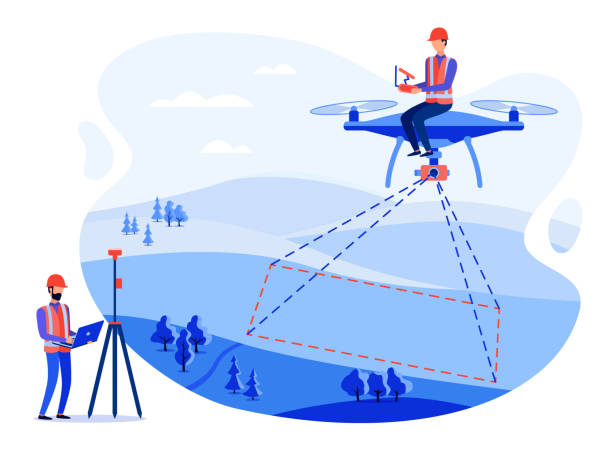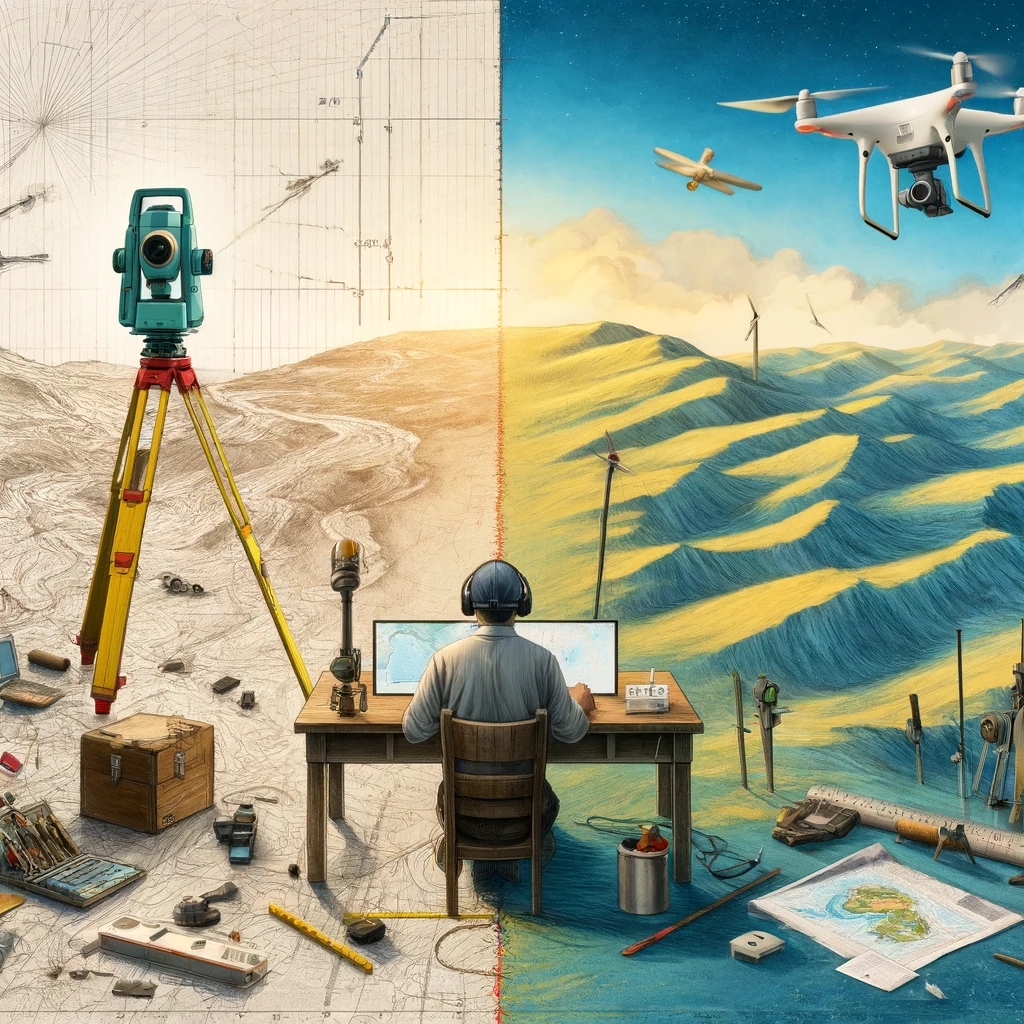Above The Ground: Harnessing The Power Of Drone Topographic Surveying
Discover the future of land surveying with drone topographic surveying. This cutting-edge technology is revolutionizing the way we map and measure the earth’s surface, providing faster and more accurate results than ever before. Drones equipped with high-resolution cameras and advanced GPS systems allow surveyors to capture detailed aerial imagery, creating precise topographic maps and 3D models of the terrain.

With drone topographic surveying, traditional methods of land surveying are becoming a thing of the past. No longer bound by physical limitations or inaccessible terrain, drones can reach remote areas and capture data from above, providing a comprehensive view of the land. Not only does this save time and resources, but it also reduces the risk to surveyors working in hazardous environments.
The benefits of drone topographic surveying extend beyond land surveying. This technology is also being used in various industries such as construction, agriculture, and environmental conservation. From site analysis and planning to volumetric calculations and vegetation monitoring, drones are enabling businesses to make more informed decisions and improve their operations.
Harness the power of drone topographic surveying and gain a competitive edge in your industry. Embrace this innovative technology and unlock a world of possibilities above the ground.
Advantages of using Drones for Topographic Surveying
Drones have revolutionized the field of topographic surveying, offering a range of advantages over traditional surveying methods. Firstly, drones can cover large areas quickly and efficiently. Equipped with high-resolution cameras, they capture detailed imagery in a fraction of the time it would take for a traditional surveying team to cover the same area. This not only saves valuable time but also reduces costs associated with labor and equipment.
Additionally, drone topographic surveying provides a higher level of accuracy compared to traditional methods. The advanced GPS systems onboard drones ensure precise positioning and measurements, resulting in more reliable data. This accuracy is crucial when it comes to tasks such as land development, construction planning, and environmental monitoring, where even small errors can have significant consequences.
Furthermore, drones offer unparalleled access to remote or difficult-to-reach areas. Traditional surveying methods often struggle to capture data in rugged or inaccessible terrain. Drones, on the other hand, can effortlessly navigate such areas, providing comprehensive coverage and eliminating the need for surveyors to put themselves at risk. This increased accessibility opens up new possibilities for surveying previously uncharted territories.
In summary, the advantages of using drones for topographic surveying are their speed, accuracy, and accessibility. By leveraging these benefits, businesses and surveyors can streamline their operations and achieve more reliable results. Drone topographic surveying truly offers a game-changing solution for land mapping and measurement.
Drone Topographic Surveying Vs. Traditional Surveying Methods

Drone topographic surveying represents a significant departure from traditional surveying methods. While traditional surveying often involves physically traversing the land and taking measurements on the ground, drone topographic surveying captures data from above, providing a comprehensive aerial view.
One of the key differences between the two approaches is the level of detail captured. Traditional surveying methods often rely on spot measurements and manual observations, resulting in a limited understanding of the terrain. In contrast, drones capture high-resolution imagery that can be used to create detailed topographic maps and 3D models. This additional level of detail enables more accurate analysis and planning.
Another key advantage of drone topographic surveying is its efficiency. Traditional surveying methods can be time-consuming and labor-intensive, requiring surveyors to physically traverse the land and take measurements at multiple points. Drones, on the other hand, can cover large areas quickly and efficiently, capturing data in a fraction of the time. This efficiency translates to cost savings and allows surveyors to complete projects more rapidly.
Despite these advantages, there are still some limitations to drone topographic surveying. Drones are dependent on weather conditions and may not be able to operate in adverse situations such as heavy rain or strong winds. Additionally, the accuracy of drone topographic surveying can be affected by factors such as GPS signal interference or limitations in image resolution. It is important for surveyors to be aware of these limitations and take them into account when interpreting the data.
In conclusion, drone topographic surveying offers significant advantages over traditional surveying methods in terms of detail, efficiency, and accessibility. However, it is important to understand the limitations of this technology and use it in conjunction with traditional surveying methods when necessary.
Key Components Of A Drone Topographic Surveying System
To harness the power of drone topographic surveying, it is important to understand the key components of a drone surveying system. These components work together to capture accurate and detailed data from above.
The first component is the drone itself. When selecting a drone for topographic surveying, it is important to consider factors such as flight time, payload capacity, and stability. Drones with longer flight times allow for more extensive coverage, while higher payload capacity enables the use of advanced cameras or LiDAR systems. Stability is crucial for capturing clear and sharp imagery, especially in windy conditions.
The second component is the camera or sensor. Drones used for topographic surveying are typically equipped with high-resolution cameras or LiDAR systems. Cameras with higher megapixel counts capture more detailed imagery, while LiDAR systems provide accurate elevation data. The choice of camera or sensor depends on the specific requirements of the surveying project.
Another important component is the GPS system. Drones rely on GPS for precise positioning and navigation. Advanced GPS systems, such as Real-Time Kinematic (RTK) or Post-Processed Kinematic (PPK) systems, offer centimeter-level accuracy, ensuring reliable data for topographic mapping.
Data storage and transmission are also crucial components of a drone topographic surveying system. Drones capture large amounts of data, and it is important to have sufficient storage capacity onboard the drone. Additionally, establishing a reliable data transmission system, such as a secure Wi-Fi network or a physical connection, allows for real-time data transfer and on-site analysis.
In summary, the key components of a drone topographic surveying system include the drone itself, the camera or sensor, the GPS system, and the data storage and transmission capabilities. Each of these components plays a crucial role in capturing accurate and detailed aerial data.
Planning A Drone Topographic Survey
Planning is a crucial step in conducting a successful drone topographic survey. Proper planning ensures that the survey captures the necessary data and meets the project requirements. Here are some key considerations when planning a drone topographic survey.
The first step is to define the survey area and boundaries. Clearly defining the area to be surveyed helps determine the flight path and data collection strategy. This includes identifying any areas of interest or specific features that need to be captured in detail. It is also important to consider any airspace restrictions or regulations
Leave a comment